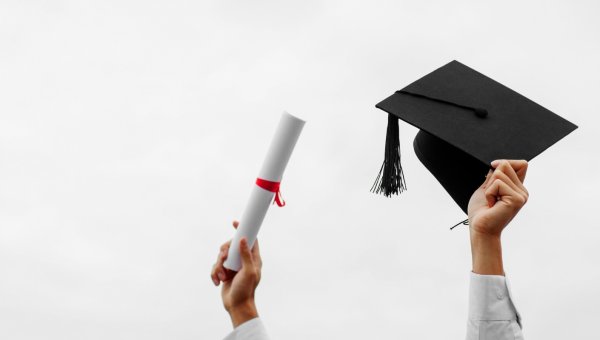Education in Armenia: A Guide for Repatriates

Education is an essential consideration when repatriating with your family to Armenia. Read on to understand more about how the education system works, to learn about public and private schooling in Armenia, and to obtain tips for facilitating a smooth transition for your children.
Education System and Structure
The education system in Armenia provides equal access to education for all residents of Armenia, including non-citizens. Primary and secondary school is compulsory for children from age six up until age seventeen.
Primary school encompasses grades 1 to 4 and places an emphasis on basic literacy and numeracy. Secondary school has two separate stages: lower secondary, grades 4 to 9, which focuses on building a strong academic foundation, and upper secondary, grades 10 to 12, which helps students to prepare for higher education or vocational training.
Fun fact: Since 2012, chess lessons have been a mandatory part of the educational curriculum in every public school in Armenia
For higher education, non-citizens who graduate from Armenian schools can apply to university with the same conditions as Armenian citizens, allowing them to avoid the bureaucratic issues often faced by foreign citizens. Armenia has adopted the European Credit Transfer and Accumulation System (ECTS) which allows postsecondary students to move between countries and have their academic qualifications recognized.
Public and Private Schools: Finding the Right Fit
Public schools in Armenia are free, offering high quality education in 150+ public schools across Armenia. The primary language of instruction is Armenian, though students also typically learn English and Russian as supplementary languages.
There are now over 50 private schools operating in Armenia and their popularity is growing. Many private schools in Armenia emphasize analytical thinking, artistic opportunities, and international educational standards, making them an attractive choice for repats and their families. However, private school tuition can be costly - in some cases, tuition costs up to 3.5 million drams per year ($9000 USD).
Practical tip: Before deciding on a school for your child, visit several public or private schools to gather resources, learn about the curriculum, meet the teachers, and gain an understanding of the learning approach. You can get in touch with fellow repat parents and ask for recommendations in the Armenian Repatriates Network.
Armenian Language Supports
If your children aren’t yet fluent in Armenian, supports are available to help them gain fluency
- AGBU Armenian Virtual College has free programs for children and adults to learn Armenian, emphasizing literacy, conversational skills, with courses offered in 8 languages of instruction
- The Peace Corps also has extensive resources for learning Armenian which can be used to start and improve your children’s language abilities
Learn more about the opportunities to learn Armenian online via this link.
Additionally, some private and international schools in Armenia provide instruction in other languages:
English Schools
- Quality Schools International
- CIS Armenia International School
- British International School of Armenia
- Shirakatsy Lyceum
- UWC Dilijan
French Schools
Russian Schools:
- Usmunq
- School No.55 after Chekhov
- School No. 7 after Mayakovski
- School No. 8 after Pushkin
More schools in Russian are available via this link.
Unique Traditions in Armenian Schools
In Armenia, the school year begins on September 1 - and you won’t be able to miss the signs that school has begun. All across the country, people celebrate “knowledge day” - you will often see children heading to school dressed up, carrying balloons or flowers they received to congratulate them on their first day, while ceremonies are held in school to acknowledge the value of knowledge and education. Another important event is the Verjin Zang or "Last Bell" ceremony which takes place at high school graduation.
The school year is split into two semesters, with time off in November and February. First-graders attend school for 30 weeks, while older students complete 34 weeks.
Common Challenges
Though Armenia’s education system helps children to build a strong academic foundation, some challenges remain.
- Rural schools may have resource limitations, including lack of funding and modern facilities
- In some rural areas, local schools have closed families must travel farther distances to bring their children to school
- Some schools have to combine classes due to low number of students
- Homeschooling is legal in Armenia though uncommon - parents must follow the national curriculum and their children must take the same standardized tests as those in public school
- Some repatriates may find the traditional curriculum in public schools to lack emphasis on critical thinking and creativity
The Government of Armenia is pursuing efforts to improve the education system, including rehabilitating and refurbishing schools, financing more community-based preschools, and furnishing school laboratories with the necessary equipment for a revised science, technology, engineering, and math curriculum.
Tips for a Smooth Transition
Enrolling your children in a new school system in a different country comes with a host of different challenges, but here are some tips to help ease the process:
- Start Language Learning Early: Sign your children up for Armenian language classes prior to moving to allow them to build momentum early and increase their confidence before they arrive in Armenia
- Connect with Repat Families: Seek out repatriate groups to get recommendations and advice about local schools from families who have already been through the process
- Research Schools in Advance: Visit schools in person and read online reviews to determine which schools offer the right curriculum for your children

- Education in Armenia: A Guide for Repatriates
- Applying to Kindergartens and Schools in Armenia
- Education for Children of Repatriates
- International Schools in Armenia
- IB Schools in Armenia
- Learning The Armenian Language Online
- Learning The Armenian Language in Armenia
- How To Get A Library Card in Yerevan